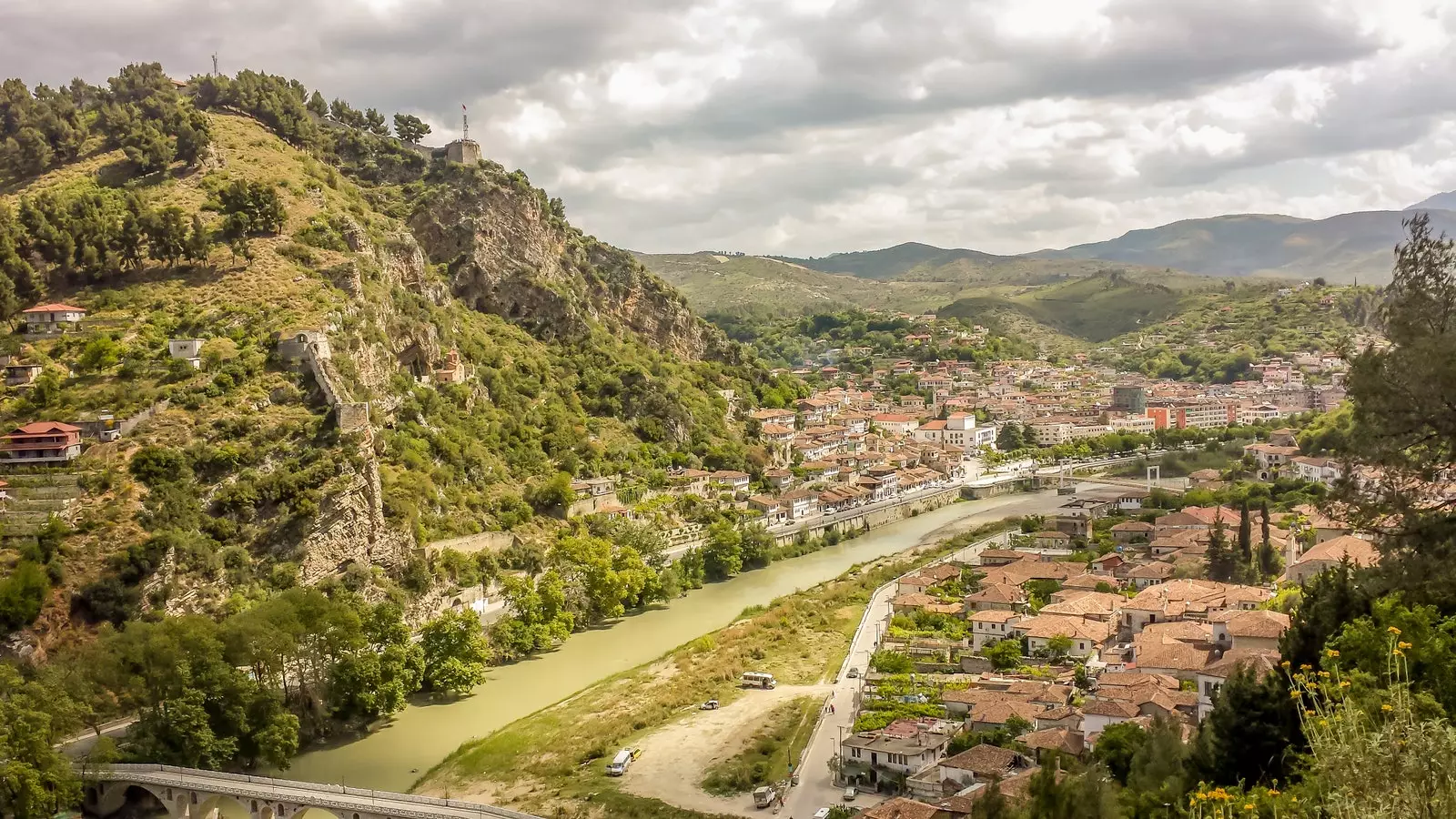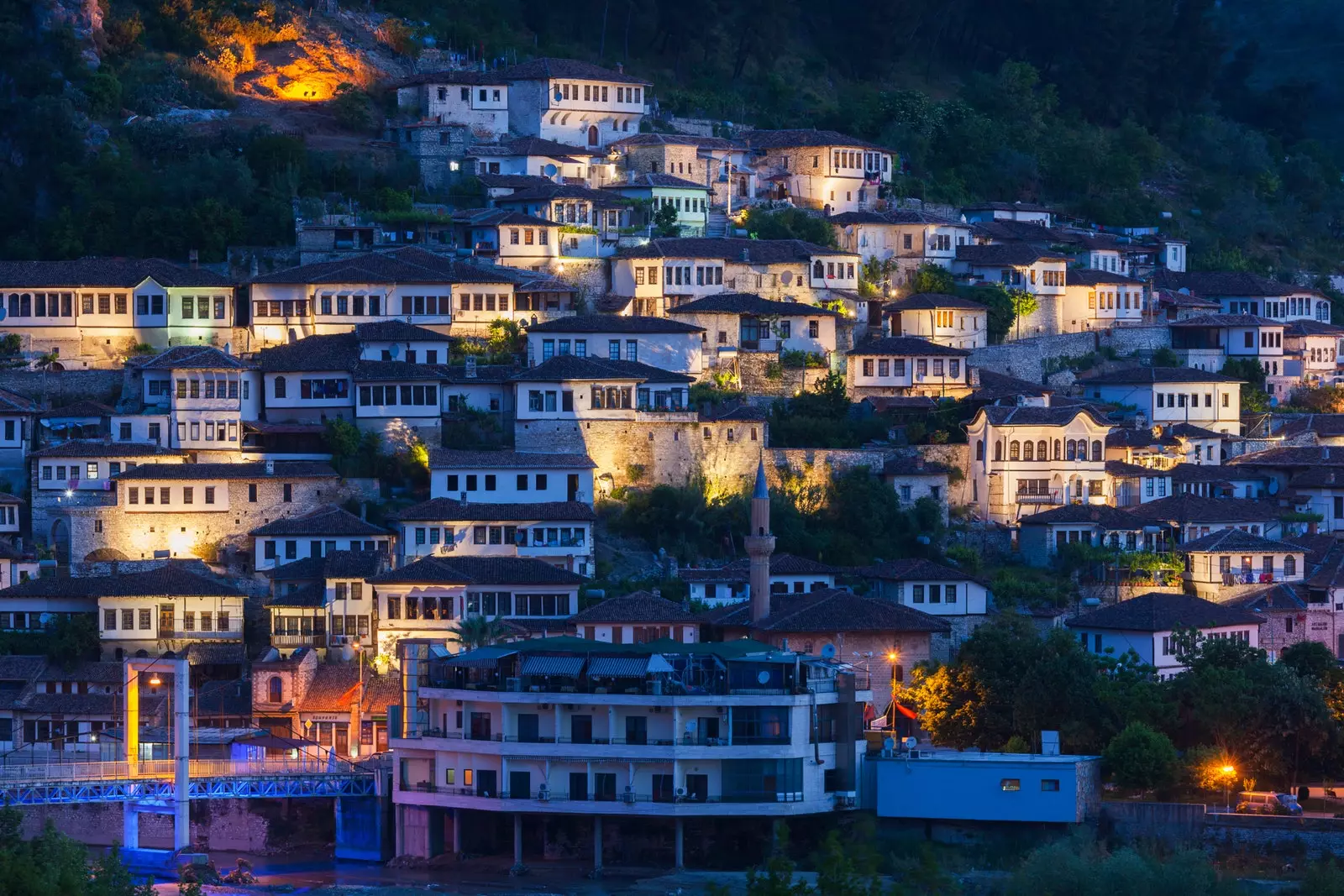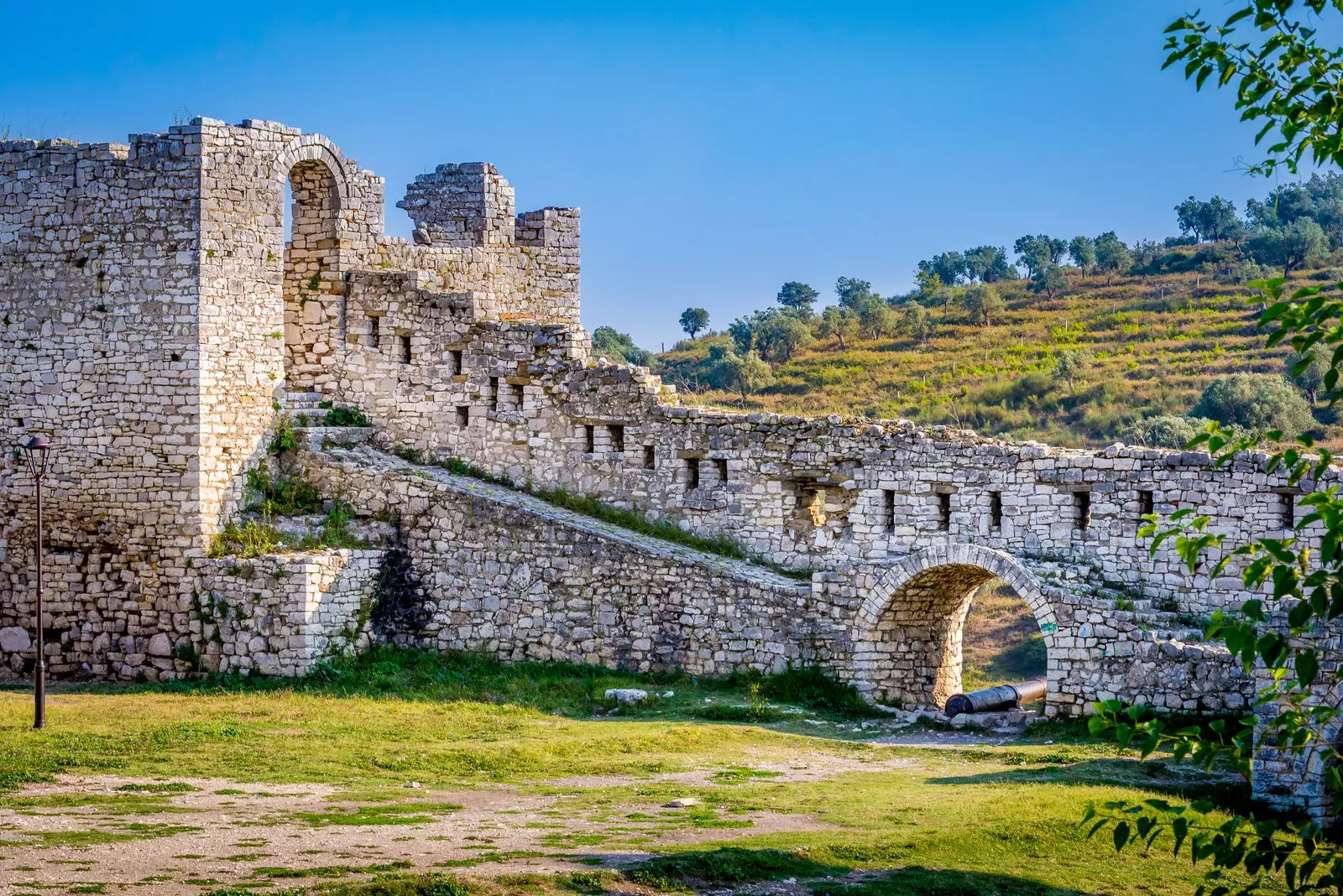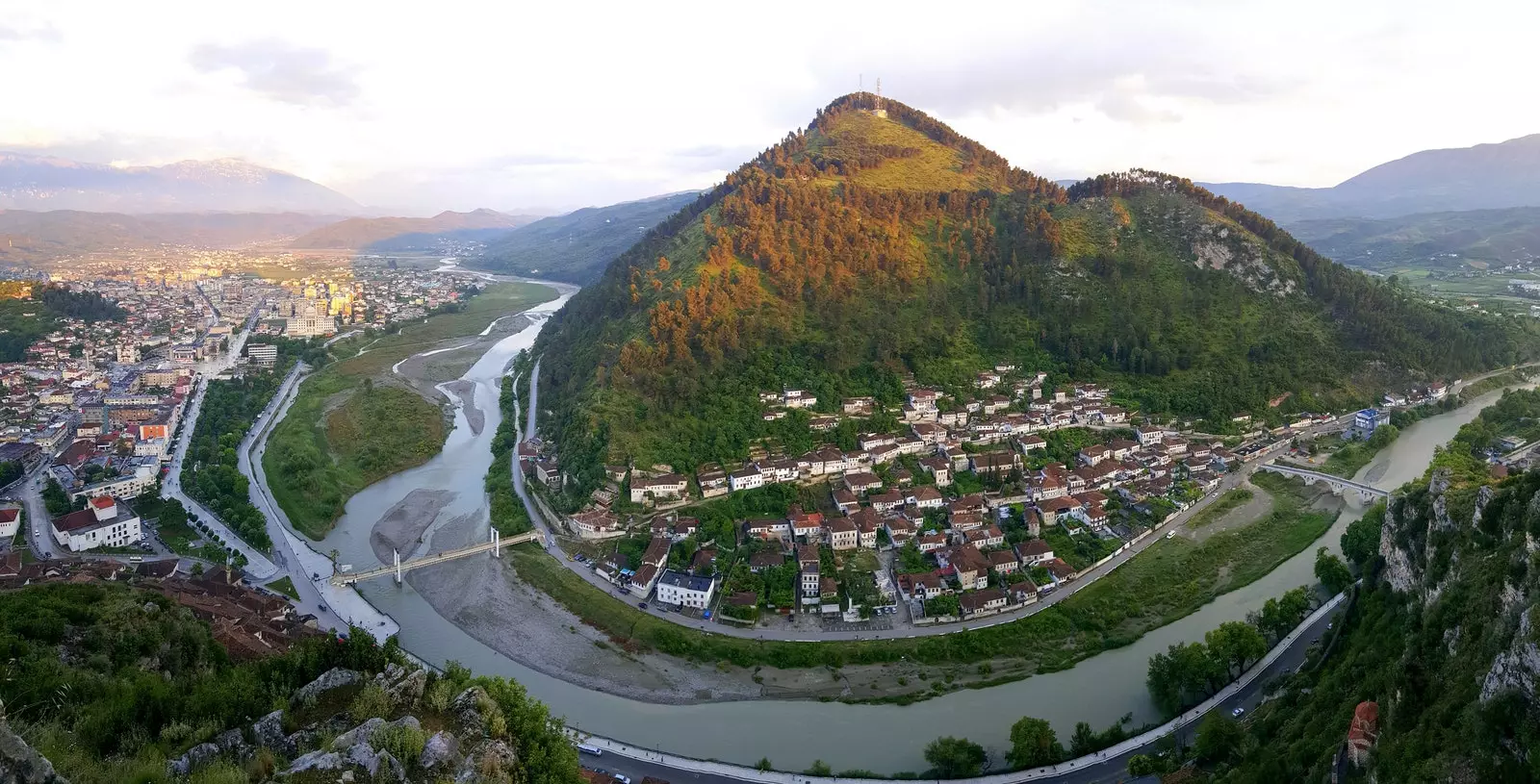The Albanian city of Berat , declared a World Heritage Site in 2008, has no less than 2,400 years of history. Founded by the Illyrians in the 4th century BC. , acquired great relevance during the Middle Ages, when the Ottomans conquered it and used it as a strategic point to take over the rest of the country. It was precisely they who were responsible for building their harmonious white houses full of windows. Those that fall in uniform waterfalls down the slopes of the mountains.
98 kilometers separate Berat from tyrant , capital of Albania. Kilometers that multiply due to winding roads, traffic and the particular driving of Albanians, capable of driving even the most avid drivers to despair. But we have come here to get all the experiences that the country offers , and driving it is one of them.
Sheltered by wild mountains, those that mark the orography of the interior of Albania, the osum river guide to the center of Berat. Among its Ottoman houses, settled in the valley, stand out religious buildings that leave evidence of the country's past, several most interesting museums and restaurants where you can taste the best of Albanian cuisine.

Berat, Albania.
It is precisely the Osum that is in charge of giving life to Berat while dividing it into different neighborhoods with very different personalities. Mangalem and Gorica they are the ones that concentrate its historical essence, and are united by means of two bridges. The one in Gorica, built in stone in the 18th century, leads to the first streets of the neighborhood of the same name, on the right bank of the river.
Quiet streets, currently being remodeled, promise to seduce visitors who will arrive in Berat in a few months, thanks to their labyrinthine walks dominated by views of Mangalem, always under the watchful eye of the castle , which colonizes the highest hill.
After the Ottoman conquest, Gorica became the Christian area , which is why it is packed with churches that, with their fervent bells, act as alarm clocks for those who decide to sleep in this neighborhood. Although the natural alarm of the place is the singing of the roosters , a way to connect with traditional Albania, its most inescapable face.
It is this neighborhood that I choose to stay, in a traditional house converted into a four-bedroom hotel. In my cozy room alone there are three of the infinite windows that Berat has. Has anyone really bothered to count them all?

The thousand windows of Berat.
ACROSS THE RIVER
up there, the castle of Berat encloses an entire city still inhabited, Kalla , standing out for being one of the few fortified in the country in which people still reside. To get to it there are two paths that start from the river.
The easiest to find is the one that follows, from the Gorica bridge, Mihal Kommena street, although ascending the other, hidden towards the end of the Mangalem houses, will take us through winding alleys that are wonderful to recover Berat's past. That yes, we choose that we choose, you have to be careful with the steep and slippery floors made of large boulders.
The first path runs alongside houses with gardens adorned by vines, and offers essential visits such as the Ethnographic Museum , which represents an Ottoman house from the 18th century. The second is lost between windows that parsimoniously observe the passing of the days.
The interior of the fortification encloses a tangle of little streets that wind between snowy buildings, another opportunity to get lost in the nooks and crannies of history. Between them rose an extraordinary complex of 42 Byzantine churches of which only eight remain standing. Most were vandalized or converted into restaurants during communism, as is the case with the arcaded church of St. George , 14th century. There are also remains of mosques: the red mosque (Xhamia e Kuqe) and the white mosque (Xhamia and Bardhë).
In the center of the citadel is the Onufri Museum, housed in the Santa María Cathedral, which also survived the times of communism. It exhibits works by several masters of iconography, among which Onufri stands out. , famous Albanian painter of the 16th century who, along with other artists of the time, filled the Balkan region with works of sacred art.

Berat wall.
Following the wall Rruga Gjon Muzaka , we can get lost among the ruins and enjoy the different perspectives of Berat and the valley, among which the one offered by the "castle balcony" is essential, the highest part and from which views of the modern area are obtained, the Mount Tomorr , the old neighborhood of Gorica and the Osum river. The sunsets color the mountains pink, and in summer fruit stalls are set up next to the viewpoint. To find it we must follow a huge Albanian flag.
Back in Mangalem, we headed to the surroundings of Rruga Antipatrea to be part of the perfect religious harmony of Berat: Islam, Christianity, Bektashi. It is curious, and even more so knowing that Albania declared itself the first atheist nation in the world during communism, even prohibiting religions.
The street starts with Singles Mosque , built in 1827 and dedicated to those men (waiters and store boys) who are not married. Followed by the Mosque of the King or the Sultan , the oldest and located next to the Tekke of the Halveti. From 1554 is the Lead Mosque , named for its cupolas covered with this material. Next, the Orthodox Cathedral of Saint Demetrius marks the beginning of the modern city.

Berat from the air.
THE TIME OF 'XHIRO' THROUGH THE MODERN CITY
The most curious custom that is carried out as a vital ritual in all the localities of Albania is that of the xhiro . In the afternoon, at the end of the day, inhabitants of any age take to the streets to walk, socialize and even carry out an entire act of courtship with very specific rules. Don't bother comparing Albanian rides to those anywhere else in the world, because the xhiro is so much more.
A whole tradition that you will only feel part of after spending three days walking the streets of Albania at nightfall.
In the case of Berat, the path chosen to carry out the peculiar habit is Bulevardi Republica . The lively artery of the new part is packed with restaurants, bars and cafes where you can indulge in the other typical hobby of Albanian evenings, to sit down and have a drink . Among the pleasant establishments, the cuci bar for its local authenticity and its traditional cuisine, although the most local dish seems to be pizza, the protagonist in most of them.
At the gates of Gorica, the Antigoni restaurant It enjoys the best views of the castle and the windows of Berat. Another exquisite option to fill yourself with Albanian flavors.
But the most special moment of the xhiro in Berat comes when passers-by let themselves be conquered by the light of the night and the white facades reproduce the splendor of their days, raising even more, if possible, the charm of this little piece of Albania.
See photos: The best beaches of the Albanian Riviera
ÇOBO WINERY, THE WINERY THAT TELLS THE STORY OF ALBANIA
14 kilometers from Berat, we arrive at Çobo Winery, a traditional family winery, the best known in Albania and the first to introduce guided tours of its vineyards and spaces.
Its history began before communism, when the grandparents of the current owners planted some vines on family land. With the arrival of communism, the cooperatives took over the land, but this did not prevent the Çobo family from struggling to carry out their dream of producing wine . The brothers went to Italy to improve their knowledge and, when they returned, they made their history part of that of Albania.
Now they have a bar in Tirana, Shendevere Wine Bar (Director: Shëtitorja Murat Toptani), and boast of having a production of 100,000 bottles per year part of which is exported to China, Australia, Malaysia and Germany. But if Çobo Winery is characterized by something, it is for being the only winery that uses grapes Vlosh in albanian , typical of the country and peculiar for the red color of its interior, hence its star bottle is called E Kuqja e Beratit, The Red of Berat.
